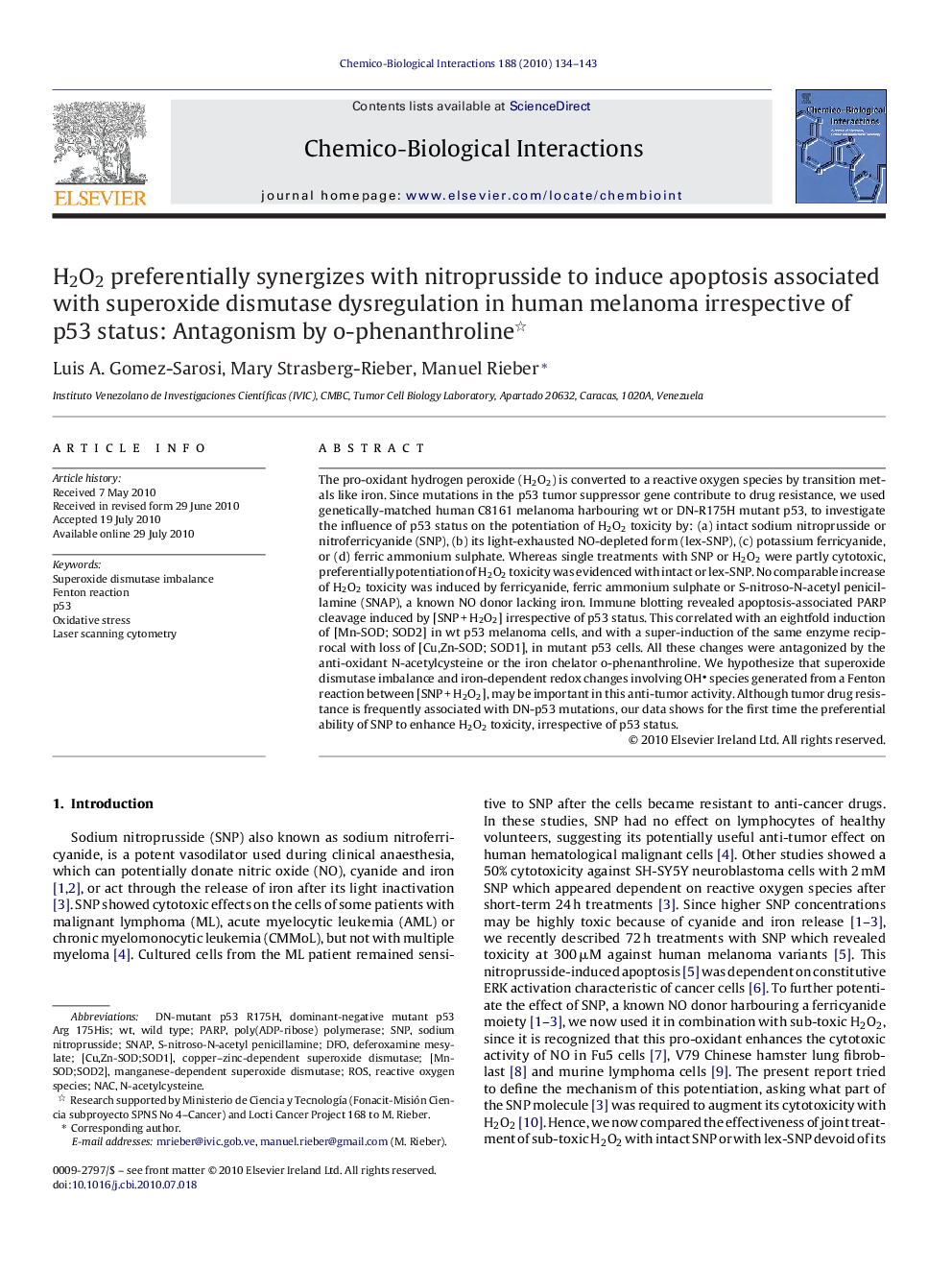| Article ID | Journal | Published Year | Pages | File Type |
|---|---|---|---|---|
| 2581056 | Chemico-Biological Interactions | 2010 | 10 Pages |
The pro-oxidant hydrogen peroxide (H2O2) is converted to a reactive oxygen species by transition metals like iron. Since mutations in the p53 tumor suppressor gene contribute to drug resistance, we used genetically-matched human C8161 melanoma harbouring wt or DN-R175H mutant p53, to investigate the influence of p53 status on the potentiation of H2O2 toxicity by: (a) intact sodium nitroprusside or nitroferricyanide (SNP), (b) its light-exhausted NO-depleted form (lex-SNP), (c) potassium ferricyanide, or (d) ferric ammonium sulphate. Whereas single treatments with SNP or H2O2 were partly cytotoxic, preferentially potentiation of H2O2 toxicity was evidenced with intact or lex-SNP. No comparable increase of H2O2 toxicity was induced by ferricyanide, ferric ammonium sulphate or S-nitroso-N-acetyl penicillamine (SNAP), a known NO donor lacking iron. Immune blotting revealed apoptosis-associated PARP cleavage induced by [SNP + H2O2] irrespective of p53 status. This correlated with an eightfold induction of [Mn-SOD; SOD2] in wt p53 melanoma cells, and with a super-induction of the same enzyme reciprocal with loss of [Cu,Zn-SOD; SOD1], in mutant p53 cells. All these changes were antagonized by the anti-oxidant N-acetylcysteine or the iron chelator o-phenanthroline. We hypothesize that superoxide dismutase imbalance and iron-dependent redox changes involving OH species generated from a Fenton reaction between [SNP + H2O2], may be important in this anti-tumor activity. Although tumor drug resistance is frequently associated with DN-p53 mutations, our data shows for the first time the preferential ability of SNP to enhance H2O2 toxicity, irrespective of p53 status.
